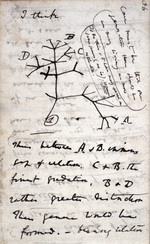Evolution of cells refers to the evolutionary origin and subsequent evolutionary development of cells. Cells first emerged at least 3.8 billion years ago... 25 KB (3,184 words) - 17:56, 22 March 2024 |
 | Eukaryote (redirect from Evolution of eukaryotes) 81% of the total biomass of Earth. Eukaryotes range in size from single cells to organisms weighing many tons Prokaryotes (small cylindrical cells, bacteria... 61 KB (6,029 words) - 18:37, 23 April 2024 |
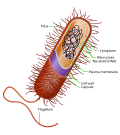 | Prokaryote (redirect from Prokaryotic cells) between cells that appear to be used for transfer of DNA from one cell to another. Another archaeon, Sulfolobus solfataricus, transfers DNA between cells by... 44 KB (4,769 words) - 23:36, 12 April 2024 |
 | Biology (redirect from Index of biology discipline articles) up of cells that process hereditary information encoded in genes, which can be transmitted to future generations. Another major theme is evolution, which... 132 KB (13,782 words) - 04:53, 19 April 2024 |
 | Multicellular organism (redirect from Evolution of multicellularity) single-celled propagule; this single cell asexually reproduces by undergoing 2–5 rounds of mitosis as a small clump of non-motile cells, then all cells become... 42 KB (4,643 words) - 19:47, 25 April 2024 |
 | Cellularization (category Biological evolution) theories to explain the evolution of cells, for instance in the pre-cell theory, dealing with the evolution of the first cells on this planet, and in the... 18 KB (1,931 words) - 02:03, 9 November 2023 |
 | Life (redirect from Characteristics of living things) formation of colonies of identical cells. These cells can form group organisms through cell adhesion. The individual members of a colony are capable of surviving... 109 KB (10,590 words) - 21:49, 23 April 2024 |
 | Sex (section Evolution of sex) immobile cells that contain the nutrients and cellular components necessary for a developing embryo. Egg cells are often associated with other cells which... 63 KB (7,040 words) - 16:37, 25 April 2024 |
 | Mitochondrion (redirect from Evolution of mitochondria) nicknamed the "powerhouse of the cell", a phrase coined by Philip Siekevitz in a 1957 article of the same name. Some cells in some multicellular organisms... 158 KB (17,629 words) - 08:47, 19 April 2024 |
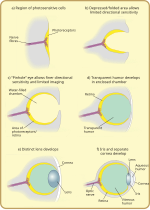 | even photoreceptor cells may have evolved more than once from molecularly similar chemoreceptor cells. Probably, photoreceptor cells existed long before... 46 KB (5,563 words) - 09:13, 2 April 2024 |
 | Sperm (redirect from Evolution of sperm) is called a spermatozoan. Sperm cells are carried out of the male body in a fluid known as semen. Human sperm cells can survive within the female reproductive... 30 KB (3,388 words) - 21:19, 21 April 2024 |
 | directly on the protein or RNA without any cells (in vitro evolution). During in vivo evolution, each cell (usually bacteria or yeast) is transformed... 44 KB (4,761 words) - 04:28, 3 February 2024 |
 | Gamete (redirect from Reproductive cells) haploid cell that fuses with another haploid cell during fertilization in organisms that reproduce sexually. Gametes are an organism's reproductive cells, also... 12 KB (1,383 words) - 12:25, 24 April 2024 |
 | Lynn Margulis (category Members of the United States National Academy of Sciences) Darwin's is with evolution." In particular, Margulis transformed and fundamentally framed current understanding of the evolution of cells with nuclei – an... 57 KB (5,918 words) - 11:32, 19 April 2024 |
Woese, Carl; Gogarten, J. Peter (October 21, 1999). "When did eukaryotic cells (cells with nuclei and other internal organelles) first evolve? What do we know... 83 KB (4,651 words) - 07:46, 12 April 2024 |
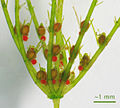 | Sex organ (redirect from Evolution of sex organs) reproduction in flowering plants involves the union of the male and female germ cells, sperm and egg cells respectively. Pollen is produced in stamens and... 20 KB (1,971 words) - 04:08, 21 April 2024 |
 | Protozoa (section History of classification) Margulis, Lynn (1974). "Five-Kingdom Classification and the Origin and Evolution of Cells". In Dobzhansky, Theodosius; Hecht, Max K.; Steere, William C. (eds... 52 KB (5,202 words) - 09:36, 19 April 2024 |
 | The cell cycle, or cell-division cycle, is the series of events that take place in a cell that causes it to divide into two daughter cells. These events... 77 KB (8,991 words) - 15:41, 30 March 2024 |
 | Virus (section Role in evolution) immune cells known as T cells. The body's cells constantly display short fragments of their proteins on the cell's surface, and, if a T cell recognises... 152 KB (18,121 words) - 16:36, 23 April 2024 |
Protocell (redirect from Proto-cell) spherical collection of lipids proposed as a rudimentary precursor to cells during the origin of life. A central question in evolution is how simple protocells... 64 KB (7,475 words) - 06:06, 17 April 2024 |
 | Archaea (category Systems of bacterial taxonomy) cell wall means that the cells have irregular shapes, and can resemble amoebae. Some species form aggregates or filaments of cells up to 200 μm long. These... 155 KB (16,478 words) - 20:04, 25 April 2024 |
Phylogenetic tree (redirect from Phylogenetic tree of life) rest of the taxa in the tree, or by introducing additional assumptions about the relative rates of evolution on each branch, such as an application of the... 29 KB (3,061 words) - 16:43, 26 March 2024 |
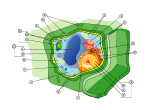 | inside the primary cell wall after the cell is fully grown. It is not found in all cell types. Some cells, such as the conducting cells in xylem, possess... 43 KB (4,782 words) - 22:49, 26 April 2024 |

